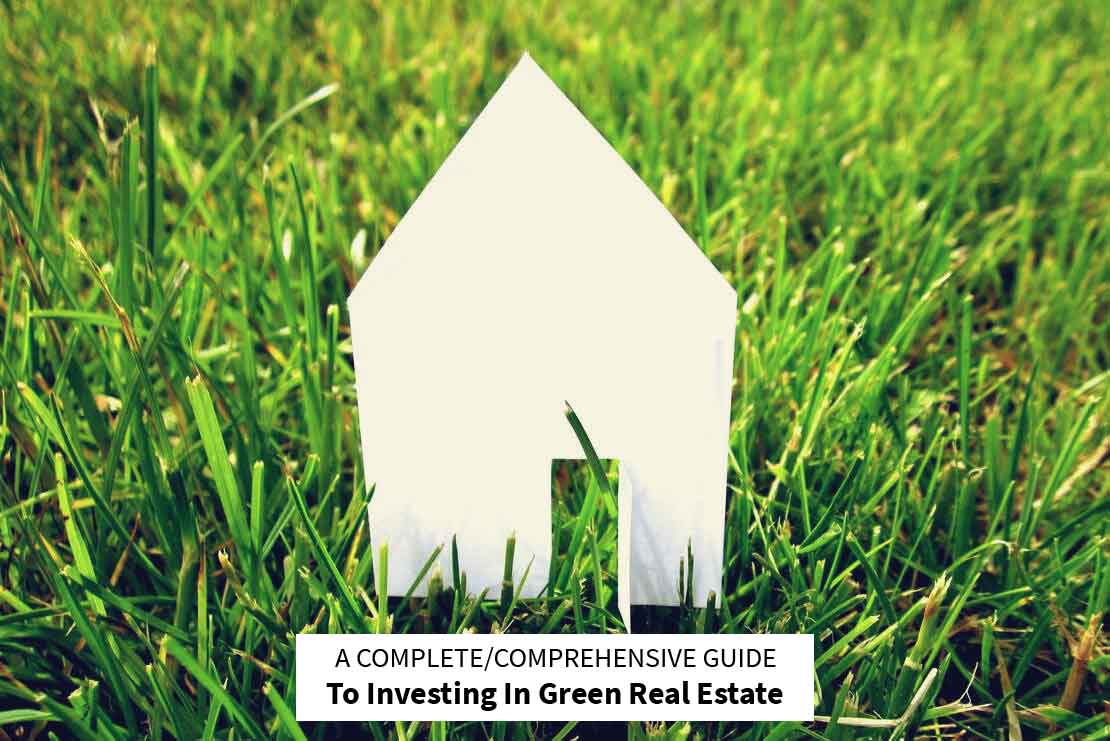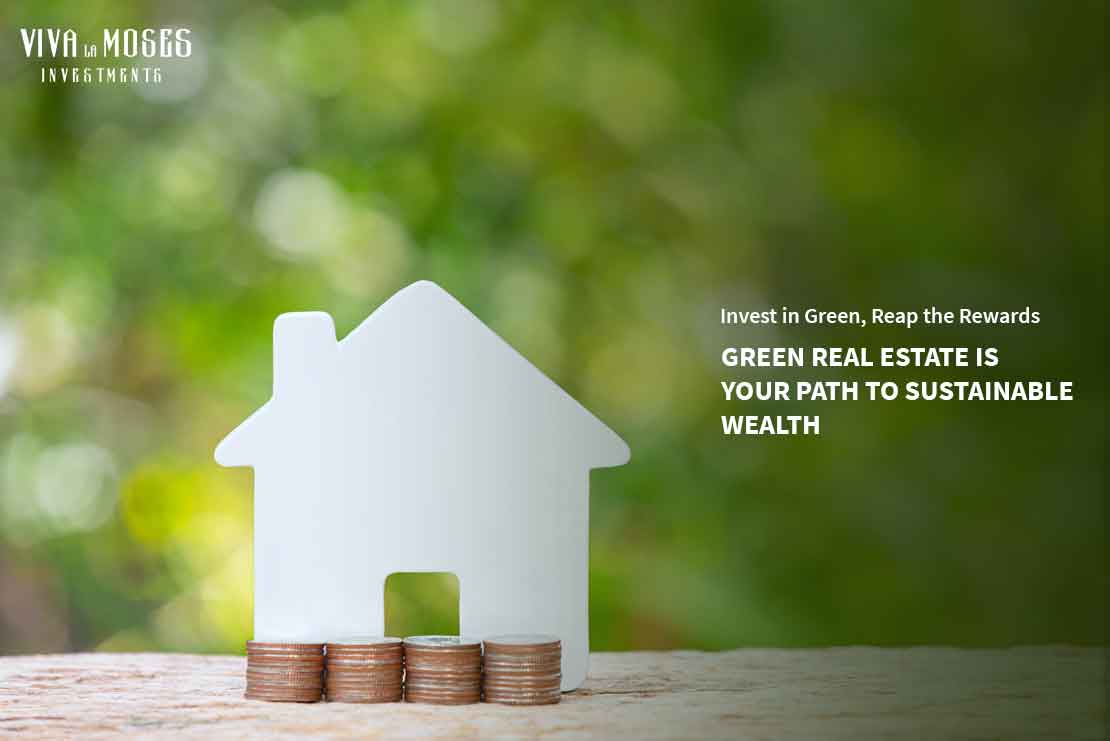
Green real estate is quickly becoming one of the most popular ways to invest in the property market. As awareness of the importance of sustainability and reducing one’s carbon footprint grows, more people are looking into ways they can incorporate these values into their lives – including their investment portfolios.
Real estate can be a very smart investment, but it’s important to understand what you’re buying before you jump in. In this article, we’ll explore what this type of real estate is, how to take advantage of it in your business, and the different types available. We’ll also give you some tips on what to keep in mind before getting into a real estate deal.
Sustainable real estate can take many different forms – from new construction projects that are designed from the ground up with sustainability in mind to older properties that have been retrofitted with energy-saving features. There are also a variety of green certifications and ratings available for real estate projects, which can help you identify properties that meet specific sustainability standards.
There are many different types of Green real estate. Some examples include:
1) LEED-certified buildings – LEED, or Leadership in Energy and Environmental Design, is a certification program that evaluates the environmental performance of buildings. Buildings that achieve LEED certification must meet rigorous standards in areas such as energy efficiency, water conservation, and waste management.
2) Green roofs – A green roof is a roof that is covered with vegetation, either plants or grasses. Green roofs help to cool buildings in the summer and retain heat in the winter. They also improve air quality and reduce stormwater runoff.
3) Solar panels – Solar panels convert sunlight into electrical energy. Installing solar panels can help reduce a building’s energy consumption and save money on utility bills.
4) Geothermal heating – Geothermal heating uses the heat from the earth to generate thermal energy. This energy can be used to heat buildings or provide hot water for bathing and laundry. Geothermal heating is a very efficient way to heat buildings and can reduce energy costs by up to 70%.
5) Grey Water Systems – Greywater is wastewater from household activities such as showering, washing dishes, and laundry. Grey water can be reused for irrigation or toilet flushing. This helps to conserve water and reduce the strain on municipal sewer systems.
Why Invest in Green Real Estate?

There are many good reasons to invest. Here are just a few:
- Sustainability is becoming increasingly important to consumers – As awareness of the importance of sustainability grows, more people are looking for sustainable options when it comes to housing and investing. By investing in green properties, you can tap into this growing market trend.
- It is often more energy-efficient – Properties that have been designed or retrofitted for sustainability often use less energy than traditional buildings, resulting in lower utility bills for tenants or owners. In addition, many sustainable features (like solar panels) can actually help increase the value of a property by reducing long-term operating costs.
- Green property projects typically have a lower environmental impact – Green construction and renovation practices typically produce less waste and use fewer resources than traditional methods. This can lead to reduced greenhouse gas emissions and a smaller ecological footprint overall.
There are many different ways to make a property green, and there are no hard-and-fast rules about it. Some of the most common features include:
Water conservation features such as low-flow toilets and faucets, drought-tolerant landscaping, and rain barrels or cisterns for collecting rainwater.
Energy conservation features such as high-efficiency appliances, LED lighting, solar panels, whole-house fans or attic insulation.
Materials conservation features such as recycled construction materials, FSC (Forest Stewardship Council) lumber, formaldehyde-free paints and carpets.
Pollution prevention features such as nontoxic cleaning products, Energy Star appliances, bike racks and carpooling incentives.
There are different types of Green property development: Residential (single-family homes), Commercial (office buildings), Institutional (schools & hospitals), Retail (Stores), and Industrial (factories).
What Should You Consider Before Investing in Green Real Estate?
If you’re thinking about investing in sustainable real estate, there are a few things you should keep in mind. First, make sure you understand what you’re buying. There are many different types of real estate available, and not all of them are created equal. Do your research and make sure you’re investing in a property that meets your needs and wants.
Second, be aware of the costs associated with green property investment. While sustainable buildings often have lower operating costs, they can sometimes be more expensive to purchase or build than traditional properties. Make sure you have a realistic understanding of the costs involved before making any decisions.
Finally, don’t forget to factor in the location of the property. Green property projects are often located in desirable areas, which can drive up the price. If you’re looking for a bargain, you may want to consider properties that are further away from major metropolitan areas.
This type of real estate is a smart investment for anyone looking to save money and help the environment.
Before getting into a Green Real Estate venture, keep in mind these factors:
Location: The location of the property is important because it will affect how much work needs to be done in order to make it environmentally friendly. For example, if the property is located near a busy highway, adding soundproofing insulation may be necessary in order to reduce noise pollution.
Net Metering: This is when the property owner generates more renewable energy than they need for their own use and sends the excess back to the electrical grid. In some states, net metering laws allow homeowners with solar panels to sell their surplus energy back to the utility company at retail rates.
Zoning Laws: Zoning laws can affect how environmentally friendly a property can be. For example, if a property is zoned for industrial use, but the owner wants to convert it into a residential home, they may run into zoning restrictions that prohibit certain types of renovations or construction.
Building Codes: Building codes establish minimum standards for construction materials and practices. They vary from state to state, so it’s important to check with local officials to see what types of green features are allowed under current building codes.
Conclusion:
Green Real Estate is a great way to help the environment while also making a smart investment and is quickly becoming a popular way to invest in the property market, as people become more aware of the importance of sustainability. There are many good reasons to invest, including the fact that it is becoming increasingly important to consumers and that it tends to be more energy-efficient. Be sure to do your research before getting involved in any green or other type of real estate venture, and keep in mind the factors we mentioned above.




